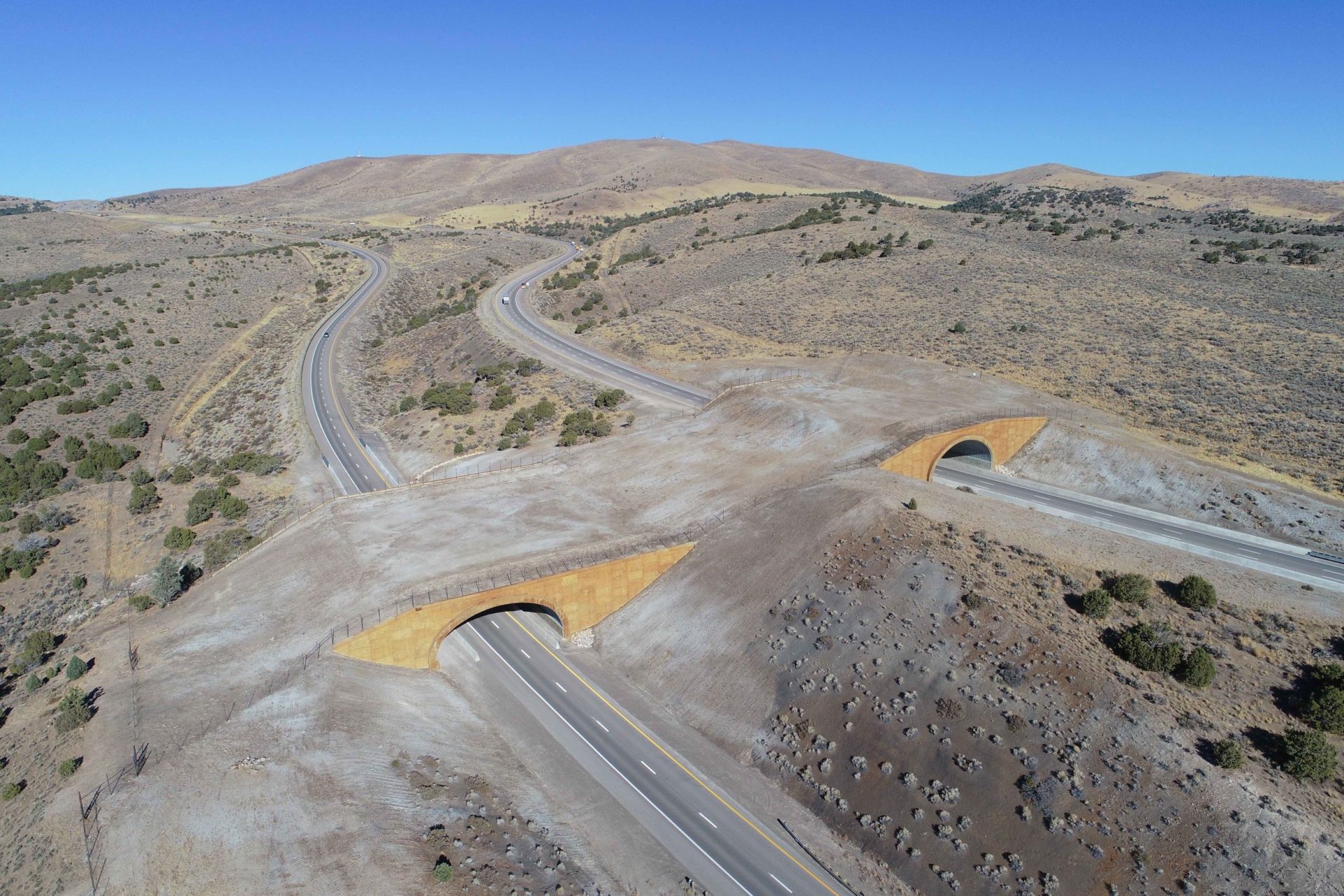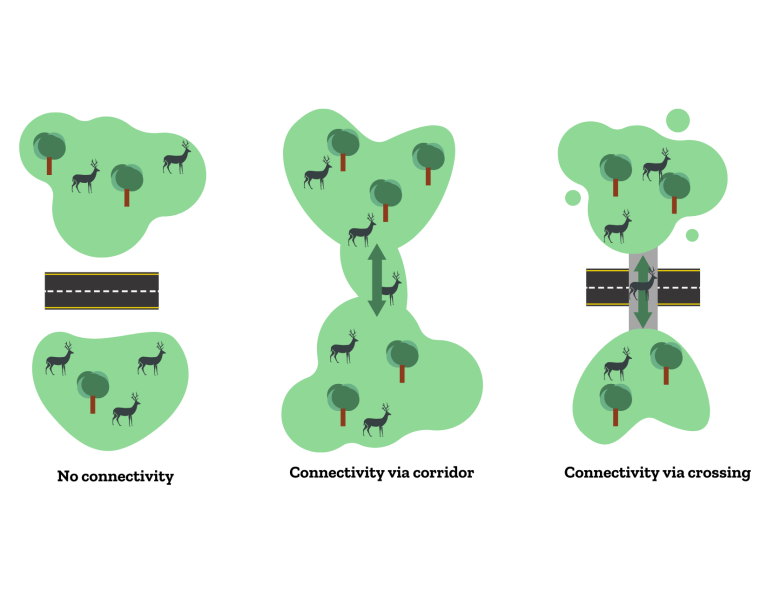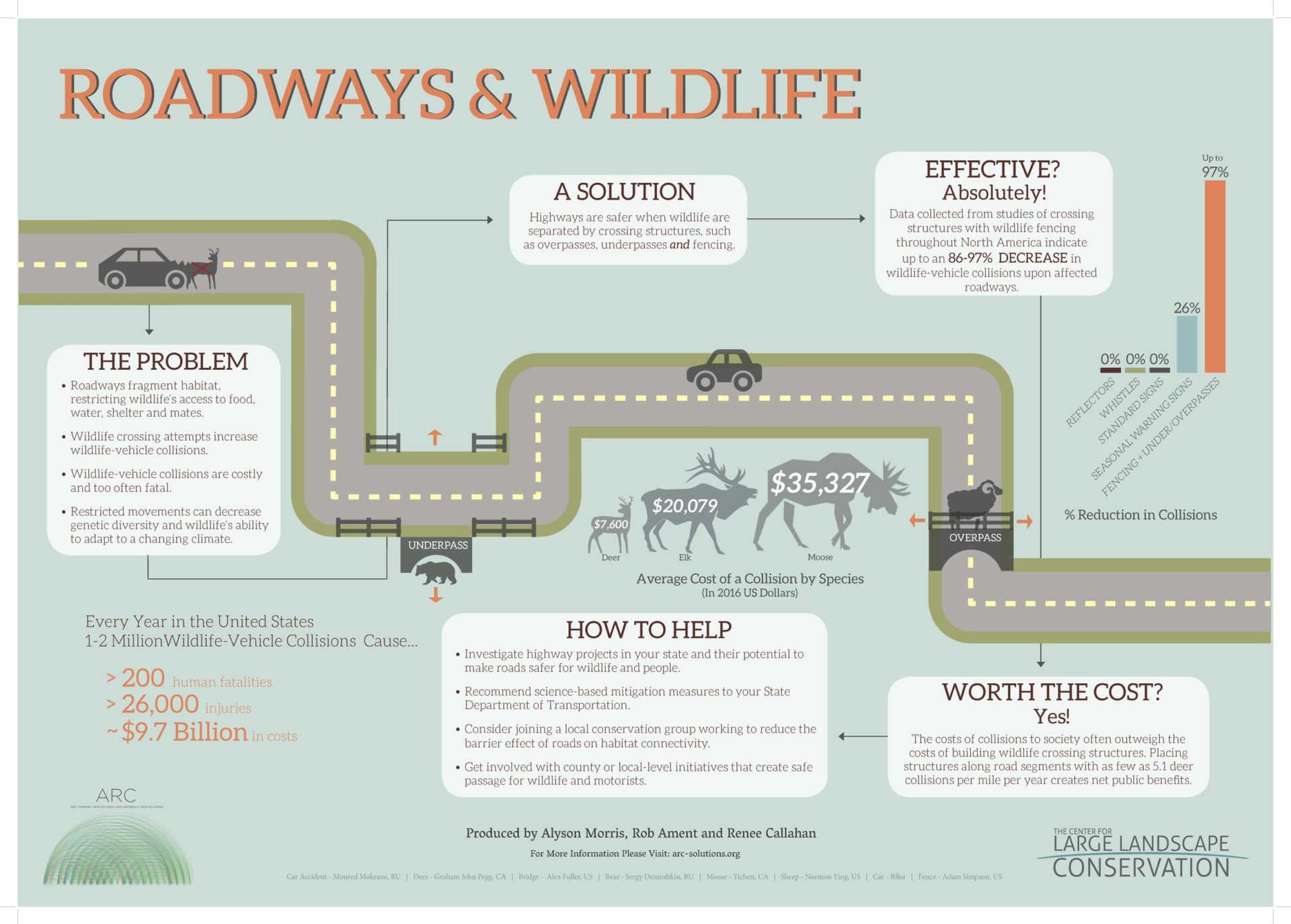
In the early 20th century, the only way to traverse the U.S. by car was on a patchwork of poorly maintained roads. Indeed, when Dwight D. Eisenhower was a young colonel, it reportedly took his military convoy more than two months to drive from one coast to the other. This experience, along with witnessing Germany’s far more efficient Autobahn network, revealed to Eisenhower the need for a national highway system. In 1956, President Eisenhower signed into law the Federal-Aid Highway Act to link together all of America’s growing cities.
Today, the U.S. hosts the largest road system in the world. Our country has nearly four million miles of public roads, including almost 47,000 miles of interstate highways. The primary considerations in constructing this network were national defense and moving goods and people across the country. Little thought was given to the consequences of severing our natural landscapes and carving up our nation’s habitat.
As a result, many American drivers have had the traumatic and dangerous experience of hitting an animal—or desperately hoping that the critter they swerved to avoid didn’t just join the legions of fauna flattened on pavement across the country. We also often drive over failing culverts beneath our roads that leave salmon and other migratory fish unable to reach their spawning grounds.
Fortunately, that is all about to change. Last week, President Biden signed into law a $1.2 trillion infrastructure package, which the White House claims is “the largest investment in the resilience of physical and natural systems in American history.” What is also historic about the new law is that, for the first time, Congress invested in transportation projects that account not just for the needs of drivers but also for the needs of wildlife that have to move between habitats bisected by our extensive highway system.
Thanks to a determined group of wildlife and transportation experts, along with a bipartisan set of lawmakers, this landmark legislation includes the first-ever dedicated pot of funding for infrastructure projects that allow fish and wildlife to move safely over and under roads. The new law establishes a “Wildlife Crossings Pilot Program” that will distribute $350M in grants over the next five years to tribal, local, state, and regional agencies.
This is a wise investment, given that conflicts between wildlife and vehicles are an increasingly urgent economic, public safety, and wildlife conservation issue. Each year, wildlife-vehicle collisions kill more than one million large mammals and cause hundreds of human fatalities and over 26,000 injuries—all at a cost to Americans of roughly $9.7 billion annually.
But wildlife crossings are part of a bigger picture: habitat connectivity and biodiversity. Roads not only cause direct mortality but also pose a daunting barrier that deters wildlife from even attempting to reach habitat on the other side. Therefore, our highways often impede the daily movements and seasonal migrations that are necessary for our nation’s fish and wildlife to find food, water, and mates. Over time, roads can fragment ecosystems so severely that only “islands” of habitat remain. The consequence for isolated wildlife populations is often inbreeding, disease outbreaks, an inability to adapt to climate change, and, eventually, local extinction.

Despite the myriad benefits of reconnecting habitat with wildlife crossings, states and tribes have been unable to build many desired projects. The main obstacle: a lack of funding. When proposals to construct “wildlife infrastructure” are forced to compete with traditional infrastructure projects, they face a steep uphill battle to obtain federal dollars. This means wildlife conservationists and their local, state, or tribal government partners have had to get creative to scrounge up the money needed.
These collaborative efforts to provide safe passage for wildlife have demonstrated that existing solutions are exceptionally effective. Numerous studies suggest that crossing structures, combined with fencing that guides animals to them, can reduce wildlife-vehicle collisions by 86-97%. Moreover, the structures pay for themselves relatively quickly by preventing costly and devastating accidents. The success of these projects—from tunnels for amphibians in Vermont to overpasses for panthers in Florida and big game in the West—prove that wildlife crossing projects generate a remarkable return on investment.
Establishing a dedicated program to invest federal dollars in such projects—plus making these projects eligible for funding under additional federal transportation programs—will finally make available the funding necessary to break ground on many new worthwhile “shovel-ready” projects. Moreover, it will bring together transportation planners and wildlife conservationists, rather than pitting them against one another. This new national grant program will catalyze efforts to stitch our landscapes back together, make our roads safer, protect wildlife, restore our fisheries, and even create roadside habitats for pollinators.

Beyond increased funding for wildlife crossings, the new infrastructure statute also includes numerous other important provisions for wildlife. For example, it mandates an updated report to Congress on reducing wildlife-vehicle collisions. That study will be used to develop a related training program for transportation and natural resource professionals. The statute also sets forth a process to streamline efforts across the nation to collect and analyze roadkill data. Finally, the U.S. Department of Transportation will assist states seeking to prioritize the road segments that most need wildlife crossing structures.
The enactment of the Infrastructure Investment and Jobs Act this month marks a historic national commitment to address the ecological impacts of roads and to implement win-win-win solutions. In the past, the scales have been tipped towards transportation projects that move drivers across the country as efficiently as possible, at the expense of nature. Now we are adopting a new approach that maximizes economic, safety, and environmental benefits. With road mortality threatening the survival of many imperiled species, and collisions with wildlife increasing dramatically across the country, the dawn of this new era comes not a moment too soon.
Anna Wearn
Anna Wearn is the Director of Government Affairs for the Center for Large Landscape Conservation. In this role, she develops and advances policies that reconnect habitats and promote collaborative conservation at the landscape scale. She assists state and federal agencies, lawmakers, and stakeholders to conserve fish and wildlife migration and to fund infrastructure projects that allow species to safely cross over and under roads.
Rob Ament
Rob Ament is the Senior Conservationist for the Center for Large Landscape Conservation, the Road Ecology Program Manager for the Western Transportation Institute at Montana State University, and the Co-Chair of the Transport Working Group for the International Union for Conservation of Nature’s World Commission on Protected Areas. Drawing on more than 30 years of experience, Rob leads numerous wildlife corridor conservation and ecological connectivity research initiatives.








